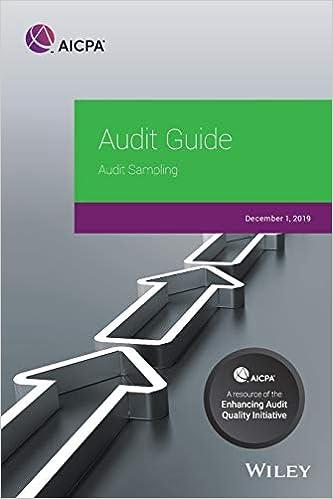4. The North York Harvest Food Bank Case Study The North York Harvest Food Bank is the primary food bank in northern Toronto, distributing 23 million pounds of food in 2015 through 77 community programs. An independent, charitable organization, they envision a community where all members are able to meet their food needs. The North York Harvest Food Bank offers a number of programs and services in addition to their warehousing and distribution operations. Food donations are a vital way in which donors and others can support hungry people in northern Toronto. North York Harvest accepts non- perishable donations at grocery drop-off locations and they accept fresh (unprepared) food donations at our main office and warehouse location. Non-perishable food donations can also be dropped off at local fire stations. Each year North York Harvest runs a number of campaigns in order to raise the food and funds they need to support people experiencing hunger. Every year schools, companies, community groups and organizations run events on their behalf. From large endeavours like running marathons and concerts in the park, to simple acts of generosity like birthday parties and bake sales, they have some pretty creative and dedicated individuals who care about families in our city who don't have enough to eat. Last year, families and individuals in northern Toronto received 140,000 food hampers through our network of neighbourhood food banks, community kitchens, perinatal programs for expecting mothers and new parents, shelters for women and youth, and drop-in meal programs. The North York Harvest Food Bank's member agencies include social service agencies, community health centres, faith-based institutions, and volunteer-run organizations. In addition to their warehousing and distribution operations, the Food Bank also coordinates a youth engagement initiative, community garden activities, free pick-your-own gleaning trips, and two smaller community food banks. The North York Harvest Food Bank would like you to lead a Web site development project for them. The Food Bank has Internet access that includes space on a Web server, but has no experience developing Web pages or Web sites. In addition to creating their web site, they would like you to train two people on their staff to do simple Web page updates. The organization wants their web site to include the following basic information: description of the organization (mission, history, and recent events), list of services, and contact information, as a minimum. They want the Web site to include graphics (photographs and other images) and have an attractive, easy-to-use layout. 5. Questions (Total 32 points weighted for 10% of final grade) (Wherever appropriate the answers should be supported by graphs and tables) 1. Identify 20 different types of stakeholders for the project, including the Food Bank's 5. Give 3 requirements for each of the top four stakeholders (4 points) 6. Using the Full Analytical Criteria Method, prioritize your requirements. (6 points) 7. Create an operational definition for the two (2) top ranked requirements. (4 points) 4. The North York Harvest Food Bank Case Study The North York Harvest Food Bank is the primary food bank in northern Toronto, distributing 23 million pounds of food in 2015 through 77 community programs. An independent, charitable organization, they envision a community where all members are able to meet their food needs. The North York Harvest Food Bank offers a number of programs and services in addition to their warehousing and distribution operations. Food donations are a vital way in which donors and others can support hungry people in northern Toronto. North York Harvest accepts non- perishable donations at grocery drop-off locations and they accept fresh (unprepared) food donations at our main office and warehouse location. Non-perishable food donations can also be dropped off at local fire stations. Each year North York Harvest runs a number of campaigns in order to raise the food and funds they need to support people experiencing hunger. Every year schools, companies, community groups and organizations run events on their behalf. From large endeavours like running marathons and concerts in the park, to simple acts of generosity like birthday parties and bake sales, they have some pretty creative and dedicated individuals who care about families in our city who don't have enough to eat. Last year, families and individuals in northern Toronto received 140,000 food hampers through our network of neighbourhood food banks, community kitchens, perinatal programs for expecting mothers and new parents, shelters for women and youth, and drop-in meal programs. The North York Harvest Food Bank's member agencies include social service agencies, community health centres, faith-based institutions, and volunteer-run organizations. In addition to their warehousing and distribution operations, the Food Bank also coordinates a youth engagement initiative, community garden activities, free pick-your-own gleaning trips, and two smaller community food banks. The North York Harvest Food Bank would like you to lead a Web site development project for them. The Food Bank has Internet access that includes space on a Web server, but has no experience developing Web pages or Web sites. In addition to creating their web site, they would like you to train two people on their staff to do simple Web page updates. The organization wants their web site to include the following basic information: description of the organization (mission, history, and recent events), list of services, and contact information, as a minimum. They want the Web site to include graphics (photographs and other images) and have an attractive, easy-to-use layout. 5. Questions (Total 32 points weighted for 10% of final grade) (Wherever appropriate the answers should be supported by graphs and tables) 1. Identify 20 different types of stakeholders for the project, including the Food Bank's 5. Give 3 requirements for each of the top four stakeholders (4 points) 6. Using the Full Analytical Criteria Method, prioritize your requirements. (6 points) 7. Create an operational definition for the two (2) top ranked requirements. (4 points)








